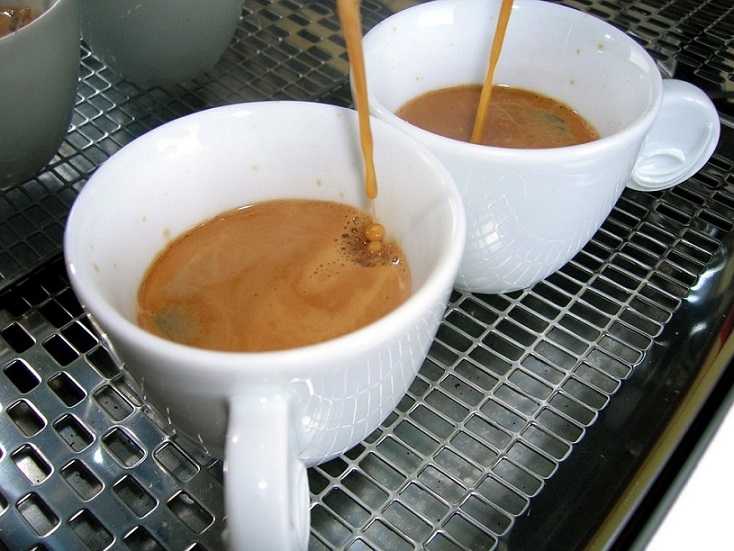Disposable coffee cups are not as big a problem in Italy, where people get their caffeine fix from a quick expresso served at the bar in a ceramic cup. Here’s why we should adopt the same habit in North America.
While traveling in Sardinia, Italy, my husband and I stopped at a small roadside bar for an early morning coffee. The barista pulled our espressi with a deft hand and pushed two white ceramic cups across the counter, along with a little sugar dish and spoon. We stirred, drank it in a few gulps, and chatted briefly with the other people lining the bar, also enjoying a quick coffee. Then we headed back out to the car and continued on our way.
Few people do this in Canada and the United States. Instead, coffee shops are designed around takeout windows or sit-down tables. It’s rare to see someone standing at the bar and downing an espresso shot instantly before heading out the door; and yet, this is brilliant. If adopted in North America, this could be solution to a very serious waste problem.
Disposable coffee cups are a tremendous source of waste. Millions are handed out each year, used for a few short minutes, then tossed in the trash. Most are lined with plastic, which makes them difficult to recycle. Very few recycling facilities have the ability to separate the cup from the lining – apparently only two locations in the United Kingdom are able to – which is why only an estimated 1 out of 400 coffee cups is recycled, according to The Independent.
Then there are the ‘biodegradable’ and ‘compostable’ coffee cups that are supposed to make people feel better about relying on a single-use product with such an absurdly short lifespan. These have their own share of problems, as well as doubtful claims. Grist reports:
“The plastic coating [in compostable cups] breaks down into tiny plastic fragments — ‘microplastics’ — which don’t actually disappear. Instead, they contaminate the finished compost as well as the soil where that compost is used, where worms and insects will ingest it. And, as some research has shown, those fragments also ultimately get washed out with the rain and feed into rivers, lakes, and oceans, where they impact marine ecosystems.”
The unpopular fact is, we need to get away from disposable coffee cups altogether; but how does one do that?
The Environment Minister in the United Kingdom has suggested a new tax on cups, similar to the plastic bag tax, in order to encourage people to remember their reusables. But, as one MP responded to the Minister’s suggestion, “Charging 5p or 10p for the cup will not work. It will not encourage people to take their own cups in if a coffee goes up from £1.90 to £1.95.” The increase has to be significant enough to hurt a bit (but coffee shop owners don’t want to hear that because it would affect sales).
Our collective coffee habit needs to change, and that is where we can learn from the Italians, who manage to caffeinate a nation multiple times a day with minimal waste. There are benefits to be had:
Waistlines will shrink as people transition from calorie-laden vats of coffee-like concoctions, full of sugary syrups and flavorings and mountainous whipped cream, to pure black coffee in espresso form, sweetened perhaps with a little milk or a small spoonful of sugar.
You will make friends, striking up conversations with the random people also standing at the bar, people whom you never would have met if you’d been sitting in your car at the drive-thru.
You will also save money because those fancy coffee-like drinks are way more expensive than the actual thing. Maybe you would even save money on gas, since you’d spend time standing on your feet in front of the bar, drinking your shot, instead of idling outside.
Coffee shops, of course, would have to be redesigned and made to serve a high volume of customers rapidly. You would have to carry cash, as most Italians do, to facilitate a quick transaction on the counter as your espresso is handed over.
It may sound idealistic, but I know this model works. I spent a year in Sardinia as a teenager and witnessed firsthand how my host parents would stop in for a quick espresso at the bar downtown on the way to dropping me off at school each morning. It’s entirely possible and must be considered seriously if the problem of single-used coffee cups is ever to be addressed.
Give it a shot. Why not?
Katherine Martinko

















